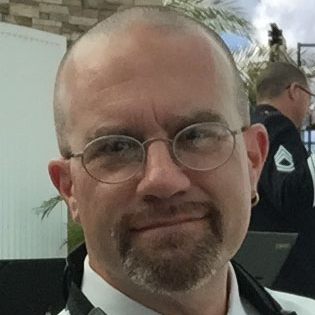ViewSonic VP2771 Professional Monitor Review
Why you can trust Tom's Hardware
Viewing Angles, Uniformity, Response & Lag
Viewing Angles
Though ViewSonic doesn’t advertise it, the VP2771 is clearly using an AHVA panel. The side-angle photo shows minimal light falloff and only a slight shift to blue. And you can easily see all the brightness steps including 10 and 0%. Top-down views show an obvious red shift, but again, the dark steps are still distinguishable from each other. In the LCD world, it doesn’t get much better than this.
Screen Uniformity
To learn how we measure screen uniformity, please click here.
It took us a bit of sleuthing to figure out how to enable the VP2771’s uniformity compensation feature. It’s grayed out unless you choose one of the fixed Color Preset modes. Obviously, it isn’t necessary. Our sample crushed the competition with one of the lowest numbers we’ve ever recorded in the black field test. And the white field number was equally impressive. And so is the color result for that matter. LCD panel uniformity is obviously of sufficient concern to users that manufacturers feel the need to compensate for flaws with technology. But this ViewSonic simply doesn’t need any help. Turning the uni-comp on only serves to lower contrast, and it actually harms the black field result.
Pixel Response & Input Lag
Please click here to read up on our pixel response and input lag testing procedures.
Gaming is not really in the VP2771’s wheelhouse given the proliferation of adaptive and fast-refresh screens available for that purpose. But with a total input lag of 64ms, it should hold its own for casual players. We had no trouble engaging in some after-hours play, as the screen responded reasonably well to our control inputs. Response is typical for 60Hz IPS panels, and motion blur is minimal. There is an overdrive feature that does a good job on its maximum setting without creating a lot of obvious ghosting. We wouldn’t take this monitor to our next gaming competition, but for playing at home or in the office, it’s fine.
MORE: Best Gaming Monitors
MORE: Best Professional Monitors
Get Tom's Hardware's best news and in-depth reviews, straight to your inbox.
MORE: How We Test Monitors
MORE: How To Choose A Monitor
MORE: All Monitor Content
Current page: Viewing Angles, Uniformity, Response & Lag
Prev Page Color Gamut & Luminance Next Page Final Analysis
Christian Eberle is a Contributing Editor for Tom's Hardware US. He's a veteran reviewer of A/V equipment, specializing in monitors. Christian began his obsession with tech when he built his first PC in 1991, a 286 running DOS 3.0 at a blazing 12MHz. In 2006, he undertook training from the Imaging Science Foundation in video calibration and testing and thus started a passion for precise imaging that persists to this day. He is also a professional musician with a degree from the New England Conservatory as a classical bassoonist which he used to good effect as a performer with the West Point Army Band from 1987 to 2013. He enjoys watching movies and listening to high-end audio in his custom-built home theater and can be seen riding trails near his home on a race-ready ICE VTX recumbent trike. Christian enjoys the endless summer in Florida where he lives with his wife and Chihuahua and plays with orchestras around the state.
-
milkod2001 Enjoying my $300 Qnix 1440p monitor for last 3years. Now i see the same specs monitor maybe slightly better colours out of the box for $499... NO Quantum Dot, tech, NO HDR, No Qsync/Free Sync2 nothing. NO sale for me, sorry.Reply
